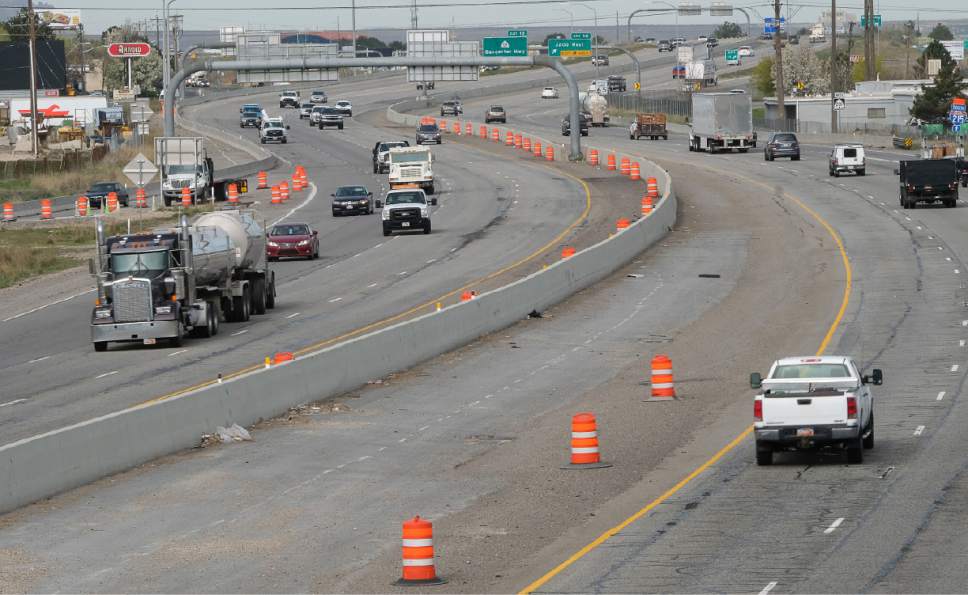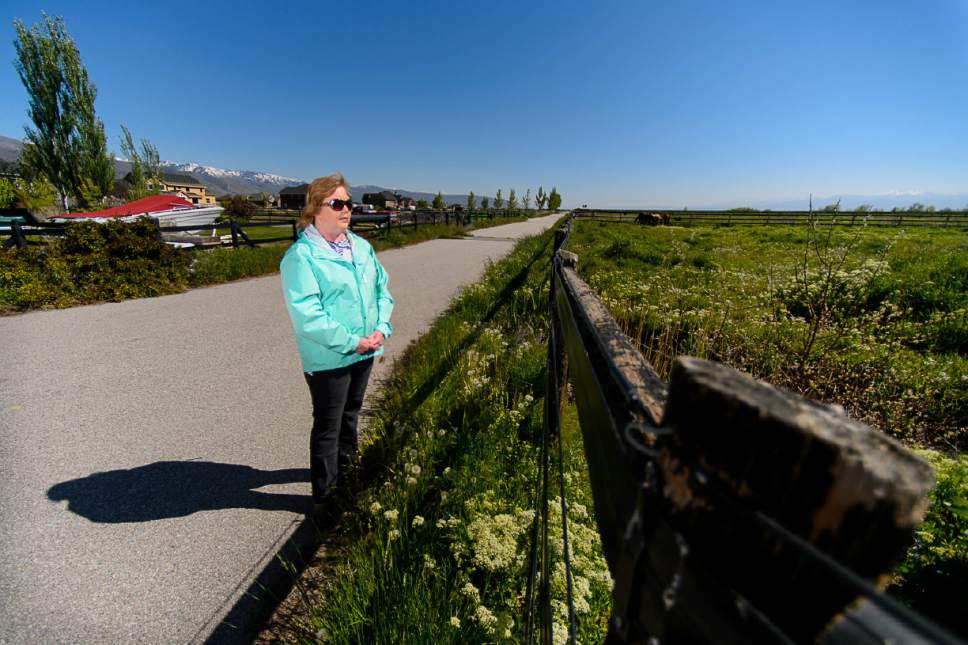This is an archived article that was published on sltrib.com in 2017, and information in the article may be outdated. It is provided only for personal research purposes and may not be reprinted.
Heber City • After the Legislature just gave it a $1 billion windfall to spend, the Utah Transportation Commission voted Friday to use the money to jump-start several big-ticket projects, including beginning the controversial West Davis Corridor highway.
Also at the top of the list are further converting Bangerter Highway into a freeway and funding several projects to smooth congestion on Interstate 15 along the Wasatch Front.
"I can appreciate the gravity of the situation for $1 billion," said Commissioner Meg Holbrook just before the vote at Heber City Hall. "I never thought in my wildest [dreams] I would be voting on this" large amount.
The Legislature earlier this year authorized borrowing the $1 billion over the next four years. Projects approved Friday also will be spread over that time and beyond — but will be built much more quickly than previously planned.
"This really is a major step forward," said Commission Chairman Kent Millington, adding that the panel studied how to spend the money for three months and took public comment during that time.
Probably the most controversial project on the list is beginning construction of the $610 million West Davis Corridor freeway — sort of a northwestern extension of Legacy Parkway. That project technically has not yet received required federal environmental approval.
It has been opposed by several federal agencies and conservation organizations that fear it may destroy too many Great Salt Lake wetlands as well as local grass-roots groups that fear razing of their homes and say other alternatives make more sense.
Approval of an environmental impact statement for the project was delayed for years to work through such issues. Carlos Braceras, executive director of the Utah Department of Transportation, says he feels a final solution is close at hand — and construction is not scheduled to begin until 2020.
West Davis and Weber counties are "really where the fast growth is happening," Braceras said recently. "It's been clear to us that there is a need to build that facility."
The commission also approved using the new bonding to help accelerate converting Bangerter Highway in western Salt Lake County into a freeway.
The project will include changing three more intersections into freeway interchanges: 6200 South (costing $64 million, with construction starting in 2019); 10400 South ($46 million, construction starting in 2022); and 12600 South ($49 million, construction starting in 2022).
The agency previously completed freeway-like interchanges on the highway at 7800 South, Redwood Road and 600 West. It also has already funded a $201 million project for similar upgrades beginning this year at 5400 South, 7000 South, 9000 South and 11400 South.
The commission also approved using part of the $1 billion to accelerate or begin numerous projects for I-15 along the Wasatch Front.
That includes speeding construction of a $450 million project to widen and improve the freeway between Lehi Main Street and State Road 92 at Thanksgiving Point in Utah County. It is being accelerated by two years, and construction is expected to begin next spring.
Also accelerated would be a $158 million project to widen the freeway from Hill Field Road to the Davis-Weber County line — including extending carpool lanes through that section.
Commissioners additionally approved speeding up a $169 million project to add a southbound lane in Salt Lake County between State Road 201 and 12300 South. "This is actually the section of I-15 where we have the most congestion," Braceras said recently. It will also improve the I-15 interchange with I-215 to ease merging between those freeways.
Part of that project will widen 7200 South beneath the freeway, currently not possible because freeway bridges are too short.
Another project approved was a $130 million effort on northbound I-15 between 9000 South and I-215. This stretch is congested in mornings and evenings from people entering at 9000 South and merging with traffic trying to move over and exit at I-215 or 7200 South.
The new project would essentially build a long bridge to separate that traffic. So drivers planning to exit onto 7200 South or I-215 would enter special elevated lanes before they reach 9000 South and "fly over" traffic entering at 9000 South.





